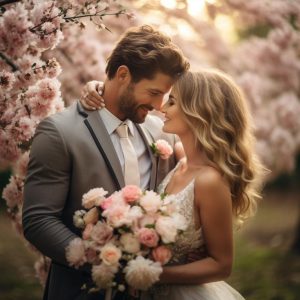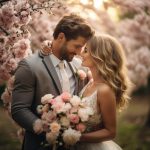Today, we’re diving into the captivating world of portrait photography – a timeless art that freezes moments and tells stories through the lens.
Whether you’re a seasoned pro or just getting started with your camera, understanding the nuances of portrait photography can elevate your skills and bring your subjects to life in a frame.
In this blog post, we’ll unravel the essence of portrait photography, exploring what makes a great portrait, the equipment you need, and the essential techniques to capture those magical moments.
From connecting with your subjects to mastering lighting and composition, we’ve got you covered on your journey to becoming a portrait photography maestro.
So, grab your camera, unleash your creativity, and let’s embark on this exciting adventure into the heart of portrait photography together!
Contents
- 1 Defining Portrait Photography
- 2 Understanding the Basics of Portrait Photography
- 3 Essential Equipment for Professional Portrait Photography
- 4 Setting Up Your Camera for Portrait Photography
- 5 Tips for Capturing Stunning Portrait Images
- 6 Conclusion:
- 7 FAQs
- 7.1 What is portrait photography?
- 7.2 Why is portrait photography important?
- 7.3 What equipment do I need for portrait photography?
- 7.4 How can I create a connection with my subjects?
- 7.5 What role does lighting play in portrait photography?
- 7.6 How can I achieve a pleasing composition in portrait photography?
Defining Portrait Photography
Portrait photography is one of the oldest genres of photography, and can be defined as capturing the likeness of a person or group of people.
Early portrait photographers used a number of techniques to achieve a good likeness, including using a large format camera and photographing the subject in a studio setting.
With the advent of digital photography, portrait photography has become more accessible to amateur photographers, and there are now a number of different ways to capture a good portrait. Here are some tips on how to take a great portrait:
1. Get close to your subject: One of the most important aspects of a good portrait is that the viewer should be able to see the subject’s features clearly. This means that you need to get close to your subject when you are taking their photo.
2. Use a wide aperture: A wide aperture (a small f-number) will help to blur the background and make your subject stand out.
3. Use natural light: If you can, try to use natural light when taking your portraits. This will give your photos a softer, more natural look.
4. Pay attention to your composition: As with all types of photography, composition is important in portrait photography. Try to frame your subject in a way that is pleasing to the eye, and don’t be afraid to experiment with different angles and perspectives.
5. Be patient: Portrait photography can be challenging, as you are often working with uncooperative subjects! Be patient and take your time, and you will be rewarded with some great portraits.

Understanding the Basics of Portrait Photography
Portrait photography is one of the most popular genres of photography. It involves taking photos of people, usually of their face, or sometimes of their whole body. Portrait photography can be used for a variety of purposes, such as to capture a person’s likeness for a passport photo, to capture a person’s personality, or to simply capture a moment in time.
There are a few things to keep in mind when taking portrait photos. First, it’s important to make sure that the subject is well lit.
This will help to ensure that the photo is clear and that the subject’s features are visible. Second, it’s important to focus on the subject’s face. This will help to ensure that the photo is flattering and that the subject’s facial features are visible.
Third, it’s important to use a wide aperture setting. This will help to blur the background and make the subject stand out. Fourth, it’s important to use a fast shutter speed. This will help to freeze the action and capture a sharp image. Fifth, it’s important to use a low ISO setting. This will help to reduce noise and keep the image clear.
Sixth, it’s important to use a tripod. This will help to keep the camera steady and prevent blur. Seventh, it’s important to take multiple photos. This will help to ensure that you capture the perfect shot.
Eighth, it’s important to edit your photos. This will help to ensure that the photo is perfect and that it captures the subject’s likeness perfectly. There are a variety of ways to edit photos, such as using Photoshop or other photo editing software.
Finally, it’s important to print your photos. This will help to ensure that the photo is of high quality and that it will last for a long time.
portrait photography is a very popular form of photography that can be used for a number of different purposes. By following the tips above, you can be sure to take great portrait photos that capture the subject’s likeness perfectly.

Essential Equipment for Professional Portrait Photography
Professional portrait photography is a type of photography that focuses on the individual rather than the surroundings. The most important thing for a professional portrait photographer is to have the right equipment. Here is a list of essential equipment for professional portrait photography:
Camera: Obviously, you will need a camera to take portrait photos. But not just any camera will do. You will need a DSLR camera with a portrait lens. A portrait lens is a lens with a focal length between 85mm and 135mm. This will allow you to capture sharp images with a shallow depth of field.
Flash: A flash is an essential piece of equipment for portrait photography, especially if you are shooting in low light conditions. A flash will help to illuminate your subject and give them that “pop” that they need to stand out from the background.
Tripod: A tripod is also an essential piece of equipment for professional portrait photography. A tripod will help to keep your camera steady and avoid camera shake. This is especially important when shooting with a long focal length lens.
Reflector: A reflector is a great way to add light to your subject’s face. Reflectors come in a variety of sizes and shapes, so you can find one that fits your needs.
Background: The background is an important part of the portrait, so you will need to choose one that compliments your subject. A plain white background is always a good choice, or you can get creative and use a different color or pattern.
Props: Props can be used to add interest to your portrait. Common props include hats, sunglasses, and umbrellas.
Portrait photography is a type of photography that focuses on the individual rather than the surroundings. The most important thing for a professional portrait photographer is to have the right equipment. Here is a list of essential equipment for professional portrait photography:
Camera: Obviously, you will need a camera to take portrait photos. But not just any camera will do. You will need a DSLR camera with a portrait lens. A portrait lens is a lens with a focal length between 85mm and 135mm. This will allow you to capture sharp images with a shallow depth of field.
Flash: A flash is an essential piece of equipment for portrait photography, especially if you are shooting in low light conditions. A flash will help to illuminate your subject and give them that “pop” that they need to stand out from the background.
Tripod: A tripod is also an essential piece of equipment for professional portrait photography. A tripod will help to keep your camera steady and avoid camera shake. This is especially important when shooting with a long focal length lens.
Reflector: A reflector is a great way to add light to your subject’s face. Reflectors come in a variety of sizes and shapes, so you can find one that fits your needs.
Background: The background is an important part of the portrait, so you will need to choose one that compliments your subject. A plain white background is always a good choice, or you can get creative and use a different color or pattern.
Props: Props can be used to add interest to your portrait. Common props include hats, sunglasses, and umbrellas.

Setting Up Your Camera for Portrait Photography
Setting up your camera for portrait photography is easy once you know the basics. In this blog post, we’ll go over the basic camera settings that you’ll need to know in order to take great portraits.
First, let’s talk about lenses. For portrait photography, you’ll want to use a lens that is around 50mm or 85mm. These lenses will allow you to get a shallow depth of field, which is perfect for portraits.
Next, let’s talk about aperture. Aperture is the setting on your camera that controls how much light enters the camera. For portraits, you’ll want to use a low aperture so that you can get a shallow depth of field. This will help to make your subject stand out from the background.
Now, let’s talk about shutter speed. Shutter speed is the setting on your camera that controls how long the shutter is open for. For portraits, you’ll want to use a faster shutter speed so that you can freeze the action. This will help to prevent any blurring that can occur when taking a picture of a moving subject.
Finally, let’s talk about ISO. ISO is the setting on your camera that controls how sensitive the sensor is to light. For portraits, you’ll want to use a low ISO so that you don’t get any noise in your pictures.
Once you have your camera set up with the proper settings, you’re ready to start taking some great portraits!
Tips for Capturing Stunning Portrait Images
What is portrait photography? Portrait photography is a genre of photography that focuses on capturing the personality and mood of a subject through their expressions, pose, and overall appearance. While many portraits are taken of people, they can also be taken of animals, inanimate objects, or even scenes.
Capturing a stunning portrait image requires more than just pointing and shooting. If you want to take your portrait photography to the next level, here are some tips to help you capture incredible shots:
Find the Right Location
The first step to taking a great portrait is finding the right location. The background of your image can make or break the shot, so it’s important to choose wisely.
When scouting locations, look for interesting textures, colors, and patterns that will add depth and dimension to your image. Avoid busy patterns and distracting elements that will take away from your subject.
Get Close to Your Subject
One of the best ways to capture stunning portrait images is to get close to your subject. When you’re too far away, your subject can get lost in the frame. Getting close also allows you to capture more intimate details, like facial expressions and subtle emotions.
If you’re photographing a group of people, don’t be afraid to get close to just one person. Focusing on a single subject will help you create a more powerful image.
Use a Wide Aperture
Another great tip for taking stunning portrait images is to use a wide aperture. A wide aperture (low f-stop number) will result in a shallow depth of field.
This means that your subject will be in sharp focus while the background is blurred. This is an incredibly effective way to make your subject pop and draw attention to their face.
If you’re using a point-and-shoot camera or a phone camera, you may not have the option to adjust the aperture. In this case, you can try moving closer to your subject or zooming in to reduce the amount of background in the frame.
Experiment with Different Angles
One of the best things about portrait photography is that there are endless possibilities when it comes to angles. Don’t be afraid to experiment and try out different angles to see what looks best.
Get low, get high, shoot from the side, front, or back. You may be surprised at how a small change in angle can completely change the look and feel of your image.
Pay Attention to Lighting
Lighting is one of the most important elements of portrait photography. The right lighting can make your subject look amazing, while the wrong lighting can ruin an otherwise great image. When possible, shoot outdoors in natural light.
Early morning or late afternoon light is typically the most flattering. If you’re shooting indoors, try to position your subject near a window. Avoid using flash whenever possible as it can be harsh and unflattering.
Edit Your Images
Last but not least, don’t forget to edit your images! A few simple edits can make a big difference in the overall look and feel of your portrait.
Try adjusting the exposure, contrast, white balance, and saturation to bring out the best in your image. With JPEG files, you can also play around with sharpening and noise reduction.
Editing doesn’t have to be complicated. If you’re new to editing, start with a basic editing program like Adobe Lightroom or Photoshop Elements. There are also plenty of great mobile apps that are perfect for quickly editing portraits on the go.
By following these tips, you’ll be well on your way to capturing stunning portrait images that you’ll be proud to share.

Conclusion:
In conclusion, portrait photography is the art of capturing the likeness of a person or group of people. It can be challenging to master, but with practice and patience, you can become a great portrait photographer.
With the tips mentioned above, you’ll be well on your way to becoming a great portrait photographer! I hope this article has helped you to better understand portrait photography and how to master it. Thanks for reading!
FAQs
What is portrait photography?
Portrait photography is a specialized form of photography that focuses on capturing the personality, character, and essence of an individual or a group of people. The goal is to create a visually compelling image that tells a story and evokes emotions. It goes beyond merely taking a picture; it’s about revealing the unique qualities and expressions of the subject.
Why is portrait photography important?
Portrait photography holds immense significance as it allows us to freeze moments in time, creating lasting memories and documenting the human experience. It’s a powerful medium for self-expression, communication, and storytelling. Whether for personal enjoyment, professional purposes, or artistic expression, portrait photography adds depth and meaning to the visual narrative.
What equipment do I need for portrait photography?
While you can start with a basic camera, upgrading to a DSLR or mirrorless camera with interchangeable lenses provides more creative control. A lens with a wide aperture (such as a prime lens) is essential for achieving that beautiful background blur (bokeh). Additionally, good lighting equipment, like external flashes or reflectors, can enhance your portraits.
How can I create a connection with my subjects?
Building a connection with your subjects is key to capturing genuine and emotive portraits. Communicate openly, make them feel comfortable, and engage in conversation to understand their personality. Encourage natural expressions and be patient; sometimes, the best moments happen when your subject is at ease.
What role does lighting play in portrait photography?
Lighting is a crucial element in portrait photography. Natural light, especially during the golden hours (early morning or late afternoon), can provide soft and flattering illumination. Understanding how to use artificial lighting, such as studio lights or flashes, allows for more control over shadows and highlights, contributing to a professional and polished look.
How can I achieve a pleasing composition in portrait photography?
A well-composed portrait is visually appealing and draws the viewer’s attention to the subject. Consider the rule of thirds, framing, and leading lines. Experiment with different angles and perspectives to add variety to your shots. Pay attention to the background to ensure it complements, rather than distracts from, the subject.







